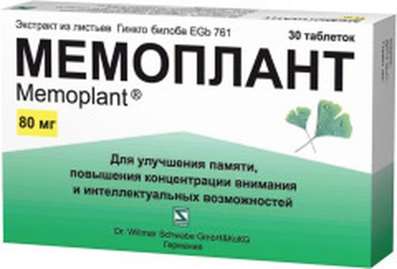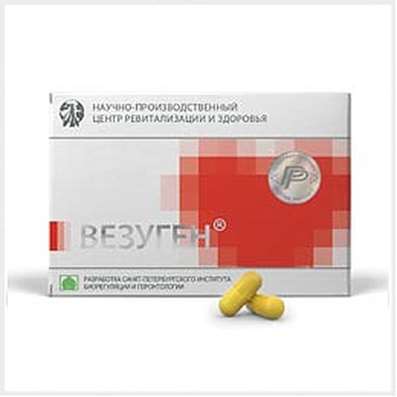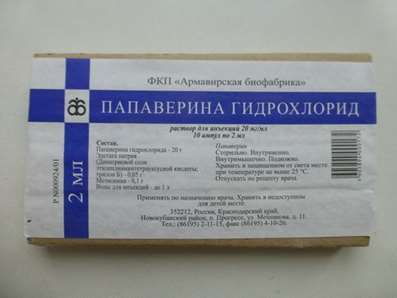Instruction for use: Oxicamox
I want this, give me price
Active substance Meloxicam
ÀÒÕ M01AC06 Meloxicam
Pharmacological group
Non-steroidal anti-inflammatory drug (NSAIDs) [NSAIDs - Oxicams]
Nosological classification (ICD-10)
M06.9 Other specified rheumatoid arthritis
Rheumatoid arthritis,Pain syndrome in rheumatic diseases, Pain in rheumatoid arthritis, Inflammation in rheumatoid arthritis, Degenerative forms of rheumatoid arthritis, Children's rheumatoid arthritis, Exacerbation of rheumatoid arthritis, Acute articular rheumatism, Rheumatic arthritis, Rheumatic polyarthritis, Rheumatoid arthritis, Rheumatic polyarthritis, Rheumatoid arthritis, Rheumatoid arthritis of active course, Rheumatoid arthritis, Rheumatoid polyarthritis, Acute rheumatoid arthritis, Acute rheumatism
M10 Gout
Exacerbation of gout, Acute articular attack with gout, Acute gouty attack, Gouty attack, Recurrent gout attacks, Chronic gout
M13.9 Arthritis, unspecified
Arthritis,Purulent arthritis (non-infectious), acute Arthritis,Pain in acute inflammatory diseases of the musculoskeletal system,Pain in chronic inflammatory diseases of the musculoskeletal system,The pain in osteoarthritis, Inflammation in osteoarthritis, Inflammatory arthropathy, Inflammatory and degenerative joint diseases, Inflammatory disease of the musculoskeletal system, Inflammatory joint disease, Inflammatory diseases of the musculoskeletal system, destructive arthritis, The disease of the musculoskeletal system, Diseases of the musculoskeletal system, Diseases of the musculoskeletal system and connective tissue, Infections musculoskeletal system, monoartrit, Non-infectious arthritis, rheumatic arthritis, Osteoarthritis, Acute inflammation of the musculoskeletal tissue, Acute inflammatory diseases of the musculoskeletal system, Acute inflammatory condition of the musculoskeletal system, Acute arthritis, Acute osteoarthritis, Post-traumatic osteoarthritis, Reactive arthritis, Chronic inflammatory diseases of the joints, Chronic arthritis, Chronic inflammatory arthritis, Chronic inflammation of the inner layer of the joint capsule, Chronic inflammation of the joint capsule,Chronic inflammatory disease of the joints, Exudative arthritis
M19.9 Arthrosis, unspecified
Change in brush with osteoarthritis, Osteoarthritis, Osteoarthrosis, Arthrosis of large joints, Pain syndrome in osteoarthritis, Pain syndrome in acute inflammatory diseases of the musculoskeletal system, Pain syndrome in chronic inflammatory diseases of the musculoskeletal system, Deforming arthrosis, Deforming osteoarthritis, Deforming osteoarthritis of joints, Osteoarthritis in the acute stage, Osteoarthritis of large joints, Acute pain syndrome with osteoarthritis, Post-traumatic osteoarthritis, Rheumatic osteoarthritis, Spondylarthrosis, Chronic osteoarthritis
M24.9 Unspecified joint injury
Degenerative and dystrophic joint disease, Degenerative diseases of the joints and spine, Degenerative changes in joints, Degenerative hip joint lesions
M25 Other joint damage, not elsewhere classified
Restoration of joint tissues Degenerative diseases of joints, Degenerative joint damage, Chronic degenerative joint diseases, Chronic joint diseases, Chronic degenerative joint disease
M25.5 Pain in the joint
Arthralgia, Pain syndrome in musculo-articular diseases, Pain syndrome in osteoarthritis, Pain syndrome in osteoarthritis, Pain syndrome in acute inflammatory diseases of the musculoskeletal system, Pain syndrome in chronic inflammatory diseases of the musculoskeletal system, Pain in the joints, Soreness of the joints, Soreness of joints in severe physical exertion, Painful inflammatory joint damage, Painful conditions of the musculoskeletal system, Painful joint conditions, Painful traumatic affection of joints, Pain in the musculoskeletal system, Pain in Shoulder Joints, Pain in the joints, Joint pain, Joint pain with injuries, Musculoskeletal pain, Pain with osteoarthritis, Pain in the pathology of the joints, Pain in rheumatoid arthritis, Pain in chronic degenerative bone diseases, Pain in chronic degenerative joint diseases, Bone-joint pain, Joint pain, Arthritic pain of rheumatic origin, Articular pain syndrome, Joint pain, Rheumatic pain, Rheumatic pains
M45 Ankylosing spondylitis
Ankylosing spondylarthrosis, Marie-Strumpel disease, Ankylosing spondylitis, Pain syndrome in acute inflammatory diseases of the musculoskeletal system, Pain syndrome in chronic inflammatory diseases of the musculoskeletal system, Bechterew's disease, Ankylosing spondylitis, Diseases of the spinal column, Rheumatic spondylitis, Bechterew-Marie-Strumpel disease
Composition
Tablets 1 table.
active substance:
meloxicam 7.5 mg/15 mg
auxiliary substances: corn starch - 22/44 mg; pregelatinized starch - 9.5 / 19 mg; silicon dioxide colloidal anhydrous - 0.8 / 1.6 mg; sodium citrate dihydrate - 10/20 mg; lactose monohydrate - 43/86 mg; MCC - 66,4 / 132,8 mg, magnesium stearate - 0,8 / 1,6 mg
Description of dosage form
Round flat tablets from light yellow to light yellow with a weak greenish shade of color, with a risk on one side and a bevel.
pharmachologic effect
Pharmacological action - anti-inflammatory, analgesic.
Pharmacodynamics
NSAIDs, which have analgesic, anti-inflammatory and antipyretic effects. The mechanism of pronounced anti-inflammatory effect of meloxicam is associated with selective inhibition of the COX-2 enzyme, which participates in the biosynthesis of PG in the inflammatory region.
Ex vivo found that meloxicam (in doses of 7.5 and 15 mg) inhibited COX-2 more actively, exerting a greater inhibitory effect on the production of PGE2 (the reaction controlled by COX-2) than on the Tx production involved in blood coagulation (reaction controlled by COX-1). These effects depended on the size of the dose. Ex vivo showed that meloxicam at recommended doses had no effect on platelet aggregation and bleeding time, in contrast to indomethacin, diclofenac, ibuprofen and naproxen, which significantly inhibited platelet aggregation and increased bleeding time. When administered in high doses, prolonged use and individual characteristics of COX-2, the selectivity decreases. Suppresses the synthesis of PG in the inflammatory region to a greater extent than in the mucous membrane of the stomach or kidneys, which is associated with a relatively selective inhibition of COX-2. Less often causes erosive and ulcerative lesions of the gastrointestinal tract. To a lesser extent, meloxicam acts on COX-1, involved in the synthesis of PG, protecting the mucosa of the gastrointestinal tract and taking part in the regulation of blood flow in the kidneys.
Pharmacokinetics
Meloxicam is well absorbed from the digestive tract, when ingested bioavailability is 89%, eating does not affect absorption. Css in the plasma is achieved 3-5 days after the start of the drug. When administered orally, Cmax is reached after 5-6 hours. Does not cumulate.
The binding with plasma proteins is more than 99%. The range of differences between the maximum and basal concentrations of meloxicam when taken 1 time / day is relatively small and lies in the range 0.4-1 μg / ml for a dose of 7.5 mg and 0.8-2 μg / ml for a dose of 15 mg (given respectively the values of Cmin and Cmax). Meloxicam penetrates through the histogematic barriers, the concentration in the synovial fluid reaches 50% of the Cmax drug in the plasma. Almost completely metabolized in the liver with the formation of four pharmacologically inactive derivatives. The main metabolite, 5'-carboxymelloxicam (60% of the dose value), is formed by oxidation of the intermediate metabolite 5'-hydroxycarboxymeloxicam, which is also excreted, but to a lesser degree (9% of the dose value). In vitro studies have shown that the isozyme CYP2C9 plays an important role in this metabolic transformation, the CYP3A4 isoenzyme plays an additional role. In the formation of the other two metabolites (which make up 16 and 4% of the dose, respectively), peroxidase takes part, the activity of which, probably, varies individually.
It is excreted through the intestines and kidneys in equal proportions, mainly in the form of metabolites. 5% of the daily dose is excreted unchanged through the intestine; in the urine in unchanged form the drug is found only in trace amounts. T1 / 2 meloxicam - 15-20 hours.
Plasma clearance is an average of 8 ml / min (decreases in old age). Vd is low and averages 11 liters. Hepatic and renal failure of mild to moderate severity does not significantly affect the pharmacokinetic parameters of meloxicam. With a severe degree of kidney failure due to a decrease in the elimination of the drug, the daily dose should not exceed 7.5 mg.
Indication
Symptomatic therapy of the following diseases:
osteoarthritis;
acute and chronic rheumatoid arthritis;
ankylosing spondylitis;
gout and other inflammatory and degenerative joint diseases accompanied by pain syndrome.
Contraindications
hypersensitivity to meloxicam or any other component of the drug and other NSAIDs;
lactose intolerance, lactase deficiency or glucose-galactose malabsorption;
complete or incomplete combination of bronchial asthma, recurrent nasal polyposis and paranasal sinuses and intolerance to acetylsalicylic acid or other NSAIDs (including in anamnesis);
erosive and ulcerative changes in the mucous membrane of the stomach or duodenum;
Gastrointestinal, cerebrovascular and other bleeding, incl. in the history (or suspicion of bleeding);
inflammatory bowel disease (ulcerative colitis, Crohn's disease);
severe hepatic impairment or active liver disease;
chronic renal failure in patients not on dialysis (Cl creatinine <30 ml / min), progressive kidney disease (including confirmed hyperkalemia);
condition after aortocoronary bypass surgery;
Decompensated heart failure;
pregnancy;
the period of breastfeeding;
children's age (up to 15 years).
With caution: ischemic heart disease; cerebrovascular diseases; congestive heart failure; dyslipidemia / hyperlipidemia; diabetes; diseases of peripheral arteries; smoking; chronic renal failure (Cl creatinine 30-60 ml / min); anamnestic data on the development of gastrointestinal ulcer; Helicobacter pylori infection, elderly age, prolonged use of NSAIDs, frequent alcohol use, severe physical illness, concomitant therapy with drugs such as anticoagulants (eg warfarin), antiaggregants (acetylsalicylic acid, clopidogrel), oral GCS (eg prednisolone), SSRIs (eg citalopram, fluoxetine, paroxetine, sertraline). To reduce the risk of developing adverse events, the minimum effective dose should be used as short a course as possible.
pregnancy and lactation
In the first and second trimesters of pregnancy, the prescription of the drug is only possible if the intended benefit to the mother exceeds the potential risk to the fetus. If it is necessary to prescribe the drug for lactation, it is necessary to resolve the issue of stopping breastfeeding.
Side effects
The incidence of side effects is characterized as often (≥1 / 10); infrequently (≥1 / 1000, <1/10); rarely (≥1 / 1000).
From the digestive system: often - dyspepsia, nausea, vomiting, abdominal pain, constipation, flatulence, diarrhea; infrequent - gastrointestinal hemorrhages (including hidden ones), peptic ulcers, gastroduodenal ulcer, esophagitis, stomatitis, transient increase in hepatic transaminase activity, hyperbilirubinemia, belching; rarely - perforation of the gastrointestinal tract, gastritis, colitis, hepatitis.
From the side of the central nervous system: often - dizziness, headache; infrequently - a noise in the ears, drowsiness; rarely - confusion, disorientation, insomnia, emotional lability.
On the part of the organs of hematopoiesis: often - anemia; infrequently - a change in the blood formula, leukocytopenia, thrombocytopenia; rarely - agranulocytosis.
Allergic reactions: rarely - angioedema, anaphylactoid / anaphylactic reactions.
From the CCC: often - peripheral edema; infrequently - increased blood pressure, a feeling of heartbeat, a flush of blood to the skin of the face.
From the respiratory system: rarely - bronchospasm.
From the skin: often - itching, skin rash; infrequently - hives; rarely - bullous rashes, incl. Stevens-Johnson syndrome, toxic epidermal necrolysis, erythema multiforme, photosensitivity.
From the sense organs: rarely - conjunctivitis, visual impairment, incl. blurred vision.
From the side of the urinary system: infrequently - hypercreatininaemia and / or increased urea in the blood serum, sodium and water retention, hyperkalemia; rarely acute renal failure in patients at increased risk; connection with the reception of meloxicam is not established - interstitial nephritis, albuminuria, hematuria.
If any of the side effects described in the description are aggravated or any other side effects not indicated in the description are noted, the physician should be informed.
Interaction
The combined use of meloxicam and other NSAIDs or acetylsalicylic acid is not recommended, as the risk of ulceration of the gastrointestinal tract and bleeding may increase.
The combined use of meloxicam with lithium preparations may lead to an increase in the concentration of these drugs in the serum.
NSAIDs may reduce the effect of diuretics and antihypertensive drugs.
In patients with impaired renal function (eg, dehydrated or elderly patients), joint administration of ACE inhibitors or angiotensin II receptor antagonists with preparations that inhibit COX can lead to further impairment of renal function, including the possible development of acute renal failure, which in most cases is reversible.
With the combined use of meloxicam and GCS, SSRIs (citalopram, fluoxetine, paroxetine, sertraline) increases the risk of ulcers of the gastrointestinal tract and serious gastrointestinal bleeding.
The combined use of meloxicam with methotrexate may lead to an increase in serum concentration in the serum and an increase in its toxic effect (risk of anemia and leukopenia, it is recommended that a general blood test be performed periodically).
The risk of nephrotoxic effects associated with the administration of cyclosporine, preparations of gold, increases when combined with meloxicam. When combined, the hepatotoxicity of cyclosporine also increases.
When combined with meloxicam and anticoagulants (warfarin) or thrombolytic agents (alteplase, streptokinase, urokinase), the risk of bleeding increases.
Inductors of microsomal oxidation (phenytoin, ethanol, barbiturates, rifampicin, phenylbutazone, tricyclic antidepressants) increase the production of hydroxylated active metabolites, increasing the risk of severe intoxication. Inhibitors of microsomal oxidation reduce the risk of hepatotoxic effects of meloxicam.
With simultaneous use with intrauterine contraceptives, the effectiveness of the latter may be reduced.
Caffeine enhances the analgesic effect of meloxicam.
Kolestyramin reduces the absorption of meloxicam.
Dosing and Administration
Inside, during or after a meal, washed down with water or milk (the volume of liquid is not less than 100 ml), in a daily dose of 7.5-15 mg. The recommended daily dose is 7.5 mg; the maximum is 15 mg.
In elderly patients and patients with severe renal failure who are on hemodialysis, the daily dose should not exceed 7.5 mg. With moderate renal failure (Cl creatinine more than 25 ml / min), as well as with moderate hepatic insufficiency, dose adjustment is not required.
Overdose
Symptoms: dizziness, nausea, vomiting, pain in the epigastric region. There may be bleeding from the gastrointestinal tract, acute renal failure, acute liver failure, respiratory arrest, asystole.
Treatment: gastric lavage no later than 6 hours after admission, forced diuresis, symptomatic therapy. There is no specific antidote. Hemodialysis is ineffective.
special instructions
During long-term treatment, control of the peripheral blood picture, electrolyte balance, coagulation system and functional state of the liver and kidneys is necessary. When using the drug, an increase in the concentration of hepatic enzymes and urea in the blood serum can be observed. These changes are weakly expressed and are transitory. In case of strongly pronounced changes, the drug should be withdrawn. Care should be taken when using the drug in patients who have a history of peptic ulcer and duodenal ulcer, as well as in patients who are on anticoagulant therapy. In such patients, the risk of erosive and ulcerative gastrointestinal lesions is increased.
When symptoms of gastropathy appear, careful monitoring including esophagogastroduodenoscopy, a blood test with determination of hemoglobin, hematocrit, analysis of feces for latent blood is shown. To prevent the development of gastropathy it is recommended to combine with gastroprotective drugs, for example misoprostol or proton pump inhibitors.
Long-term use of Oksikamox by patients with uncontrolled high blood pressure, heart failure, concomitant ischemic heart disease, peripheral arterial occlusive lesions and / or cerebrovascular diseases, risk factors for cardiovascular disease (eg high blood pressure, hyperlipidemia, diabetes, smoking) should be continued only after thorough examination.
If it is necessary to determine 17-ketosteroids, the drug should be discontinued 48 hours before the test.
Patients taking both diuretics and meloxicam should take a sufficient amount of fluid.
Patients with a slight or moderate decrease in renal function (Cl creatinine more than 30 ml / min) do not need a dosage adjustment.
Meloxicam , as well as other NSAIDs, can mask the symptoms of infectious diseases.
If allergic reactions (itching, skin rash, urticaria, photosensitization) occur during treatment, you need to see a doctor to resolve the issue of stopping the drug. In patients with an increased risk of developing side effects, treatment starts with a dose of 7.5 mg.
In patients with dehydration of various etiologies, chronic heart failure, liver cirrhosis, nephrotic syndrome, diuretics, clinically pronounced renal diseases, daily diuresis and renal function should be monitored.
The use of meloxicam, as well as other drugs blocking the synthesis of PG, can affect fertility, so it is not recommended for women planning a pregnancy. During the period of treatment, ethanol is not recommended.
Special precautions for the destruction of unused medicinal product. There is no need for special precautions when destroying an unused Oksikamox.
Influence on ability to manage motor transport and other mechanisms. Special studies on the effect of the drug on the ability to drive vehicles and mechanisms have not been carried out, nevertheless one should be careful when driving vehicles and engaging in other potentially dangerous activities that require an increased concentration of attention and speed of psychomotor reactions.
Form of issue
Tablets, 7.5 mg or 15 mg. For 10 tab. in a blister of aluminum foil and PVC / PVDC film. For 1, 2, 5 or 10 blisters are placed in a cardboard box.
Conditions of leave from pharmacies
On prescription.
storage conditions
In a dry, the dark place at a temperature of no higher than 25 ° C.
Keep out of the reach of children.
Shelf life
2.5 years.
Do not use after the expiry date printed on the package.

 Cart
Cart





